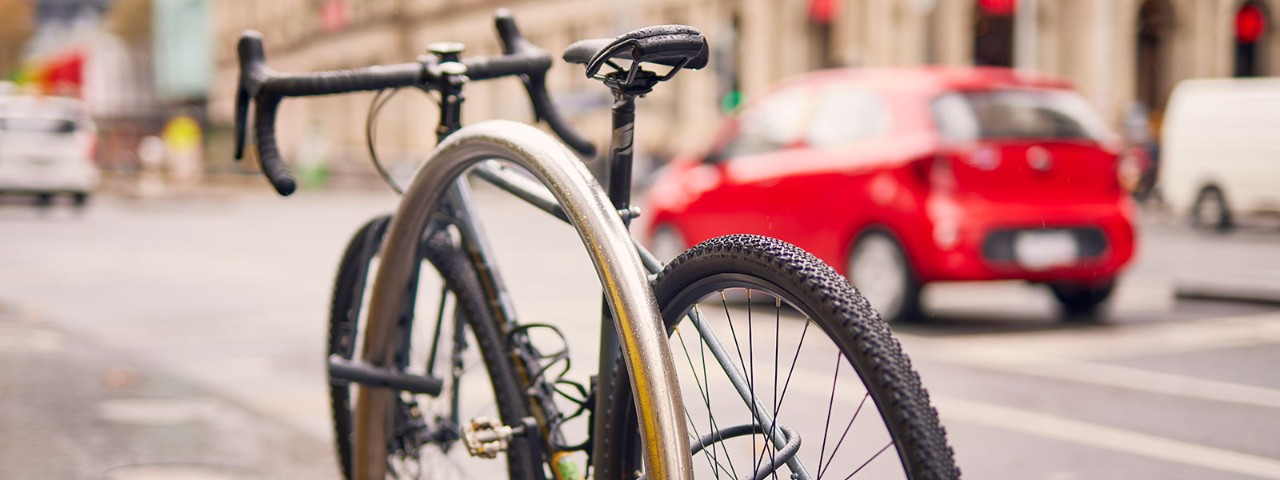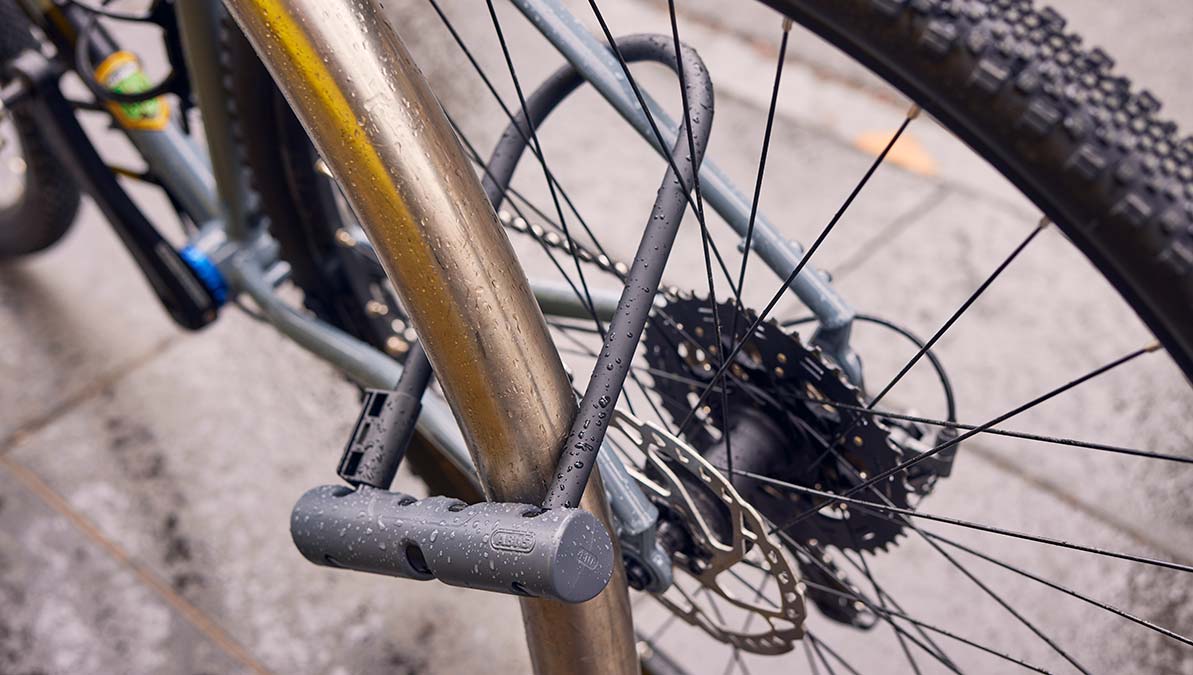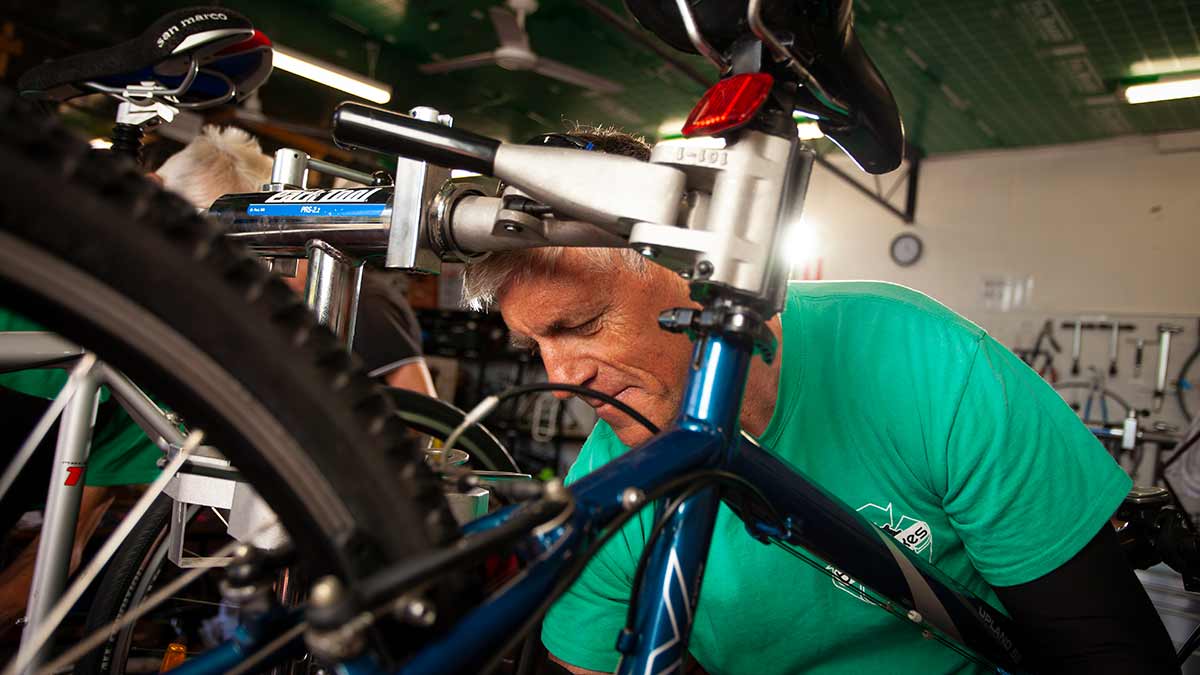Many Victorians want to transport their bicycles on road trips or days out to enjoy new cycling routes. Here’s how to carry a bike in your car safely and legally.
How to protect your bike from theft

Bike theft from car parks, apartment blocks and driveways is on the rise. Here's how to keep your bike safe and prevent it being stolen.
Victoria's Crime Statistics Agency (CSA) data shows 8,573 bicycles were reported stolen in the year ending March 2025, an increase of more than eight per cent from the previous year. Top bicycle theft locations were from the surrounding grounds of residences (2,341 recorded thefts), from the street or footpath (1,578), from private dwellings (1,095), and from public transport locations (1,014).
Whether you ride a premium road bike, a rugged mountain model, or a practical commuter e-bike, protecting your two-wheeled investment from theft is essential. With a combination of common sense, quality bike locks, smart storage and digital tools, you can significantly reduce the chances of falling victim to opportunistic thieves.
Here's how to protect your bike from theft at home, on the street and wherever your cycling adventures take you.
More cycling advice and expert tips
Why are bikes a top theft target?
Bicycles are a favourite among thieves for a few simple reasons: they're relatively easy to steal, quick to resell, and hard to trace. The rise of high-end bicycles - some valued at $5,000 or more - makes them especially attractive to thieves and burglars. Even modest bikes or components like wheels, saddles and lights can be stripped and sold separately.
Knowing where, how, and when thefts typically occur can help you implement stronger deterrents and smarter security habits.
Tips to prevent bike theft and stolen bikes
Bike theft is a crime of opportunity. The more barriers you put between your bike and a potential thief, the better. Invest in a high-quality lock, develop good locking habits, store your bike securely and use technology to your advantage.
Use a solid D-lock to secure your bike
A lock should always be used to secure a bike, both at your property and in public.
Not all bike locks are created equal: a cheap cable lock may be light and easy to use, but a determined thief can cut through many cable locks in seconds with standard bolt cutters. A high-quality D-lock (also called a U-lock) provides the best bike security because it's extremely difficult to cut with bolt cutters.
Always lock the frame and at least one wheel to an immovable object. If you only lock the front wheel, a thief can remove it and take the rest of the bike. Ensure you lock your bike to a solid, fixed object that can’t be easily cut or removed. Don’t rely on signposts or wooden railings, which can be broken or lifted.
In addition, a coiled wire lock is useful for securing the wheels of the bike to the frame. Wheels and tyres are often the focus of thieves, and extra locks add hassle and time.
Choose a safe location to park your bike
Whether you're parking your bike at work, the shops or a train station, choosing the right location is crucial. When out and about, look for these features:
- High visibility - park your bike where it's easily seen by passers-by, as thieves prefer secluded spots where they can work unnoticed.
- CCTV coverage - areas with security cameras offer additional theft deterrence
- Well-lit areas - if you're parking at night, choose well-lit spots to help avoid opportunistic thieves
- Designated bike racks - proper racks offer better support for locking and make theft more difficult than flimsy railings or signs.
Take advantage of secure underground bike parking or storage cages whenever possible.
At home, don't leave your bike unlocked out the front of your property. Keep it inside the house, away from windows or gates where opportunistic burglars might see it and be tempted to break-and-enter your property. Instead, store your bike in a locked garage, shed or storage cage. If you live in an apartment block that doesn't have secure bike parking, consider keeping your bike inside your apartment.
Even inside, keep your bike secured to a fixed anchor point if possible. Heavy-duty bike anchors bolted into concrete or brick offer excellent protection for expensive bikes.

A high-quality D-lock is considered the strongest and safest type of bicycle lock. Image: Matt Harvey
Take advantage of bike registration services
In Australia, most states don't require mandatory registration of bicycles. However, several free or low-cost services allow you to register your bike in a national database. If your bike is stolen and later recovered, police can use the registry to contact you.
BikeVault, a free Australian bike registry where you can log your bike’s details and report it if stolen, is a popular option. Include your bike's frame serial number (usually found under the bottom bracket), a description of unique features, accessories or customisations, and photos of your bike from different angles.
Make your bike easily identifiable
Make your bike unique and easily identifiable so that it can be returned to you if it's recovered.
This should include engraving your name or driver licence on the bike frame. Engrave a V for Victoria first, as this helps police understand that the proceeding numbers belong to a driver's licence. You could also use a UV or tamper-evident sticker with your ID or phone number.
Some cyclists opt for the 'ugly bike' approach: making their bikes look less appealing with stickers, paint or rust-like finishes to deter thieves. While not foolproof, it may be effective in some areas.
Invest in a GPS tracker
Tech-savvy cyclists are increasingly turning to GPS trackers and smart locks to keep an eye on their bikes.
Popular options include an Apple AirTag or Tile, which can be hidden under the saddle or inside handlebars. They use Bluetooth and crowdsourced networks to help you locate your bike. Bike-specific GPS devices like Sherlock or Knog Scout also offer real-time tracking, motion alerts and theft detection.
Insure your bike under Portable Items Cover
Bike insurance is often overlooked until it's too late. You might want to opt to include Portable Items Cover*, which helps protect valuables that you or your family take outside your home, such as bicycles.
Bicycles are covered under Portable Items Cover when used for commuting, recreational purposes, social rides (e.g. Around the Bay in a Day), or in organised charity.
Please note that bicycles are not covered under Portable Items Cover while being used in a competitive race or time trial.
Be mindful what you share online
Be careful what you share online. Apps like Strava or Instagram posts can inadvertently reveal where you live or store your bike. Thieves often scout social media for targets, so a little caution goes a long way.
Avoid posting photos of your bicycle with identifiable street signs or garages, and don't publicly share details of your bike's high value or upgrades. You can also adjust privacy settings on fitness apps to hide your home address or start/stop points.
Secure your bike accessories
Many bike components and accessories are quick to remove and easy to sell. Quick-release wheels, saddles, lights, bags, pumps, GoPros and GPS units are all common targets.
When parking, remove all valuable items from your bike. If you can't remove them, secure detachable parts with a second lock. You can also use locking skewers or security bolts for wheels and seatposts.

Make your bike identifiable by engraving your licence number on the frame. Image: Getty
What to do if your bike is stolen
Despite your best efforts, bike theft can still happen. Acting quickly improves the chances of recovery, so follow these steps ASAP:
- Report the theft to police - include your bike's serial number, make/model, description and photos
- Notify your insurer - provide all required documentation and a copy of the police report
- List your bike on stolen registries - use BikeVault or community forums to flag your stolen bike
- Search online marketplaces - thieves often try to sell stolen bikes quickly via Gumtree, Facebook Marketplace or eBay
- Alert local bike shops and cycling groups - they may spot your bike being offered for sale or brought in for repairs.
The information provided is general advice only. Before making any decisions please consider your own circumstances and the Product Disclosure Statement and Target Market Determinations. For copies, visit racv.com.au. As distributor, RACV Insurance Services Pty Ltd AFS Licence No. 230039 receives commission for each policy sold or renewed. Product(s) issued by Insurance Manufacturers of Australia Pty Ltd ABN 93 004 208 084 AFS Licence No. 227678.
*Cover for portable items is subject to underwriting guidelines, please refer to the PDS. Please note, fishing and sporting equipment, musical instruments or firearms not being covered whilst in use.


